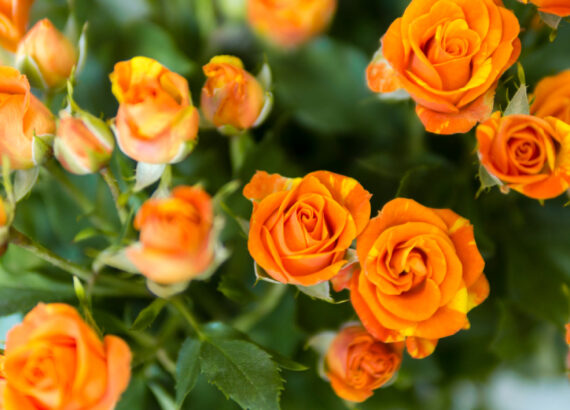Seasonal Care Tips for Your Flower Garden: A Year-Round Guide to Blooming Success

A vibrant flower garden bursting with color is a joy to behold. But keeping your floral haven thriving throughout the year requires a bit of planning and seasonal TLC. This comprehensive guide equips you with the knowledge to nurture your flower garden through each season, ensuring a continuous display of blooms and a thriving ecosystem for pollinators.
Spring: Planting the Seeds of Success
Spring is the season of renewal, and your flower garden awakens from its winter slumber. Here’s how to kickstart a flourishing year:
- Soil Preparation: As the frost thaws, assess your soil’s condition. Amend it with compost or aged manure to improve drainage, aeration, and nutrient content. Test your soil’s pH and adjust it if necessary for the flowers you plan to grow.
- Planting Power: Refer to your region’s last frost date and choose cool-season flowers like pansies, violas, and snapdragons for early plantings. Gradually introduce warm-season annuals like marigolds, zinnias, and cosmos as temperatures rise. Sow seeds directly outdoors following packet instructions, or start seeds indoors for earlier blooms.
- Fertilizing for Growth: Apply a balanced fertilizer formulated for flowering plants at the recommended rate to promote healthy growth and vibrant blooms.
Summer: Maintaining the Magic
Summer brings long, sunny days and peak bloom for many flower varieties. Here’s how to keep your garden flourishing:
- Watering Wisely: Consistent moisture is vital during the hot summer months. Water deeply at the base of plants early in the morning or evening to minimize evaporation. Consider installing a drip irrigation system for efficient water use.
- Deadheading Delights: Regularly remove spent flowers (deadheading) to encourage continuous blooming. This practice redirects the plant’s energy towards producing new flowers rather than seed production.
- Mulch Magic: Apply a 2-3 inch layer of organic mulch around your plants to retain moisture, regulate soil temperature, and suppress weeds. Replenish mulch as needed throughout the season.
- Pest Patrol: Summer often sees an increase in pest activity. Monitor your plants for signs of damage and use organic methods like insecticidal soap or neem oil to control pests before they wreak havoc.
Autumn: Preparing for Winter’s Rest
As summer wanes and days shorten, it’s time to prepare your flower garden for winter. Here are some key steps:
- Fall Cleanup: Remove spent flowers and annuals from the garden. This helps prevent the spread of diseases and allows perennials to focus on storing energy for winter. Chop up plant debris and add it to your compost pile.
- Protecting Perennials: Some perennials benefit from winter protection. Cut back perennials to their designated winter height (refer to specific plant care instructions). Cover tender perennials with a layer of mulch or straw to insulate them from harsh winter temperatures.
- Dividing and Transplanting: Fall is an excellent time to divide overgrown perennials. This process rejuvenates the plants and allows you to propagate new ones for additional blooms next year.
Winter: Planning for Spring’s Return
While your flower garden may appear dormant during winter, there’s still plenty you can do to ensure a successful spring season:
- Planning and Seed Ordering: Research new flower varieties you’d like to introduce to your garden. Order seeds from reputable suppliers during the late winter months to ensure they arrive in time for spring planting.
- Tool Maintenance: Clean, sharpen, and store your gardening tools properly during the winter months. This ensures they’re ready for use come spring.
- Winter Sowing (Optional): For regions with mild winters, consider trying winter sowing. Sow seeds directly outdoors in containers and leave them exposed to the elements. Fluctuations in temperature will naturally break seed dormancy, and seedlings will emerge in early spring.
Bonus Tips for Year-Round Success:
- Attract Pollinators: Plant a variety of flowers that bloom throughout the season to attract butterflies, bees, and hummingbirds, vital pollinators for your garden’s ecosystem. Consider incorporating native plant species that support local pollinators.
- Embrace Companion Planting: Research companion planting techniques to create a harmonious balance in your garden. Certain plants can deter pests for others, while some combinations promote healthy growth.
- Keep a Garden Journal: Document your planting schedule, successes, and challenges throughout the year. This valuable resource will guide you in making informed decisions for your garden in seasons to come.
A well-cared-for flower garden is a year-round commitment that brings endless rewards. By following these seasonal care tips, you can ensure your garden remains vibrant and healthy through every season. From preparing the soil in spring to protecting your plants in winter, each step is crucial for the overall health and beauty of your flower garden.
Embrace the changing seasons and enjoy the beauty and serenity that a well-maintained flower garden provides. Happy gardening!







No Comments